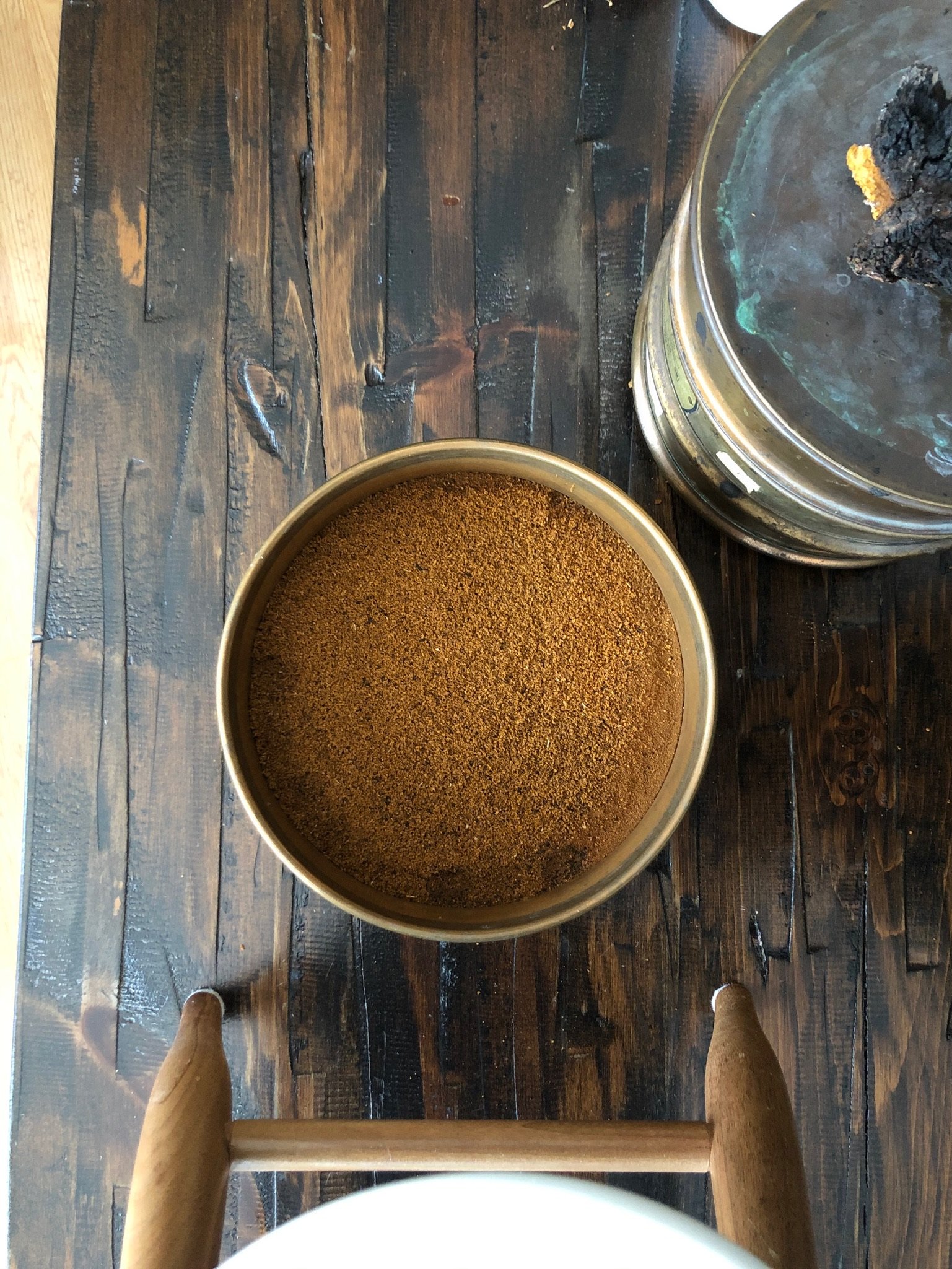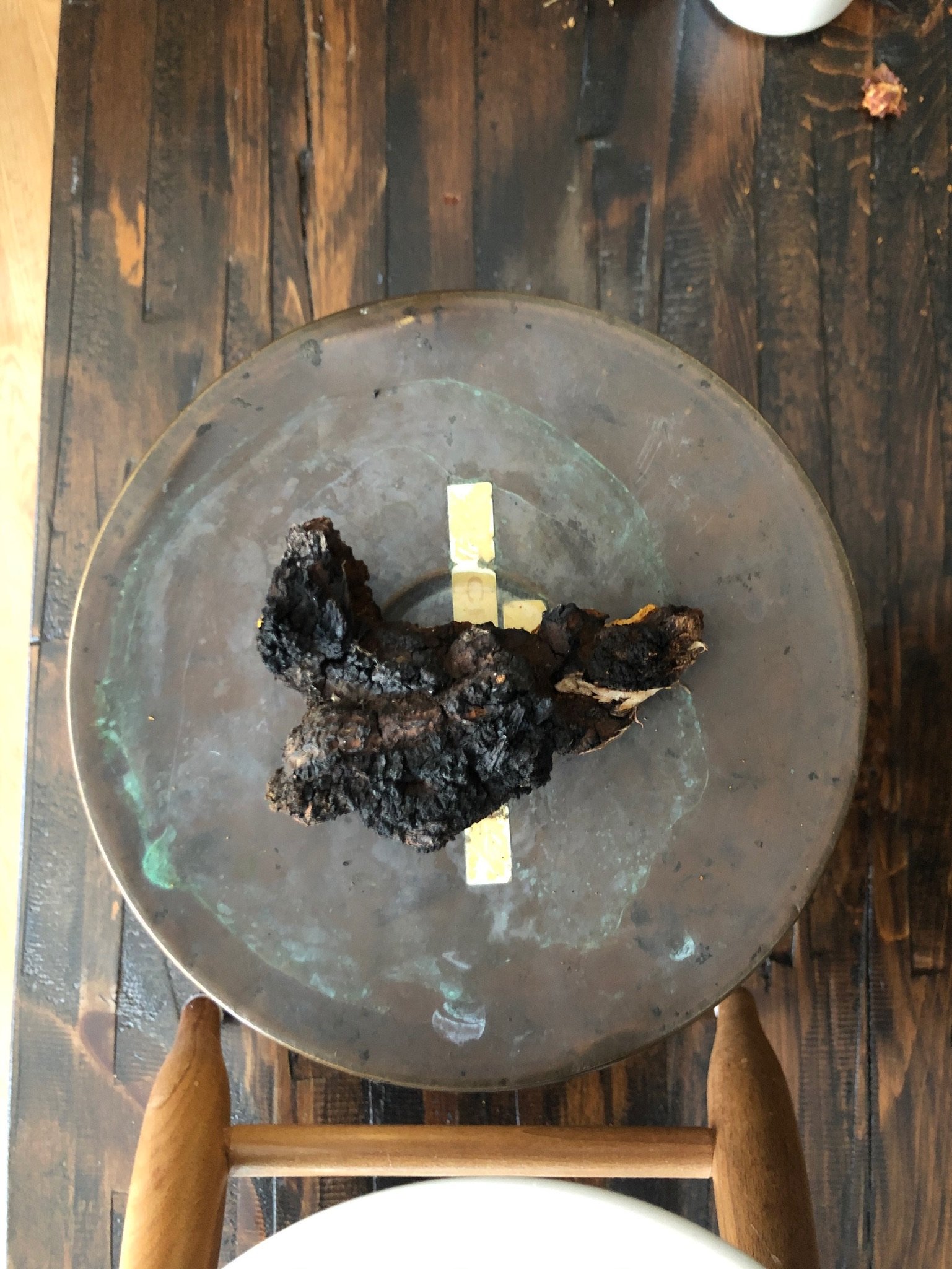Why Fall Is The Best Season For Harvesting Chaga
Different seasons require different harvesting method
Chaga is a knobby black mushroom that clings to birch trees in Northern climates. To the untrained eye, if you saw this growing on a birch tree you’d probably think it has something wrong with it. But no, this is a real treasure. And it’s kind of beautiful. On the outside it can look a bit gnarly like a chunk charcoal, black and burnt. But behind its rough exterior it’s laced with a velvety, golden-brown mycelium centre that almost sparkles. It’s unique.
Now, let me tell you how to properly harvest this magical fungus. It's not just a matter of hacking away at a tree with a saw - that's a big no-no. In my opinion it leads to unnecessary waste and can damage the tree in a way that it may not recover from. I’m also not a fan of chiseling it off, as it does not allow for proper appreciation of the fungus and can cause harm to the tree.
Guide to properly harvest Chaga throughout the season
We've got to be mindful of the environment and the delicate balance of nature.
Harvesting in the winter can be difficult, and you may need to resort to using more forceful techniques. In the spring, it's important not to disturb the bark where the chaga is located. There's a lot of life going on in the tree beneath the bark, and disturbing it can cause harm. It's best to let the tree finish budding out and leave the chaga alone.
In my experience, I find the best thing to do is wait for the fall, when the fungus is easier to access and can be broken away in a more natural state. This allows the tree to continue to grow and thrive, and to maintain its own sacred connection to the earth. It’s important to develop an appreciation for its slow, intricate life cycle. Chaga takes years to grow to harvestable size, and once it has been harvested, it takes several more years for it to regrow. A reminder of the importance of patience and respect for the natural world.
If you harvest chaga properly, you'll get a much better product that's easier on the environment.
But harvesting chaga is more than just a practical matter - it's a spiritual one too. When you approach chaga with reverence and gratitude, you start to appreciate the beauty and mystery of the natural world in new and profound ways. It's not just about taking a supplement - it's about forming a deep and meaningful relationship with a living being that can bring healing and joy to your life.
Take the time to get to know chaga and make friends with it.
For me, the spiritual connection I have developed with chaga has been a valuable and transformative experience. It has taught me the importance of mindfulness, respect, and gratitude for the natural world. It has also reminded me of the power of traditional knowledge and the importance of preserving and passing on this knowledge to future generations.
It's a beautiful, magical fungus that can help us feel more alive and connected to the world around us. But we can't take it for granted - we've got to know our sources and use it properly. And when we do, we'll be rewarded.















